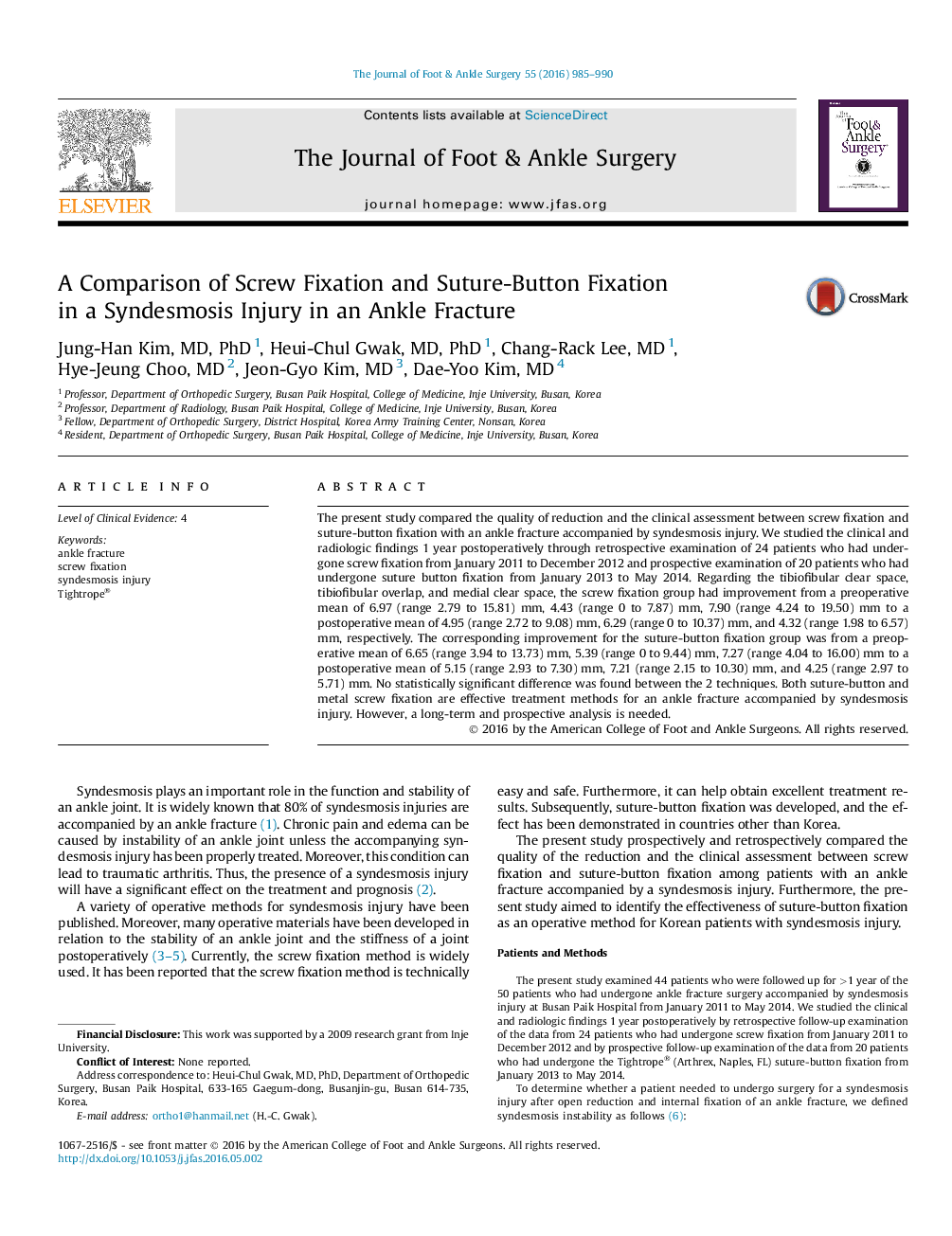| Article ID | Journal | Published Year | Pages | File Type |
|---|---|---|---|---|
| 2712738 | The Journal of Foot and Ankle Surgery | 2016 | 6 Pages |
The present study compared the quality of reduction and the clinical assessment between screw fixation and suture-button fixation with an ankle fracture accompanied by syndesmosis injury. We studied the clinical and radiologic findings 1 year postoperatively through retrospective examination of 24 patients who had undergone screw fixation from January 2011 to December 2012 and prospective examination of 20 patients who had undergone suture button fixation from January 2013 to May 2014. Regarding the tibiofibular clear space, tibiofibular overlap, and medial clear space, the screw fixation group had improvement from a preoperative mean of 6.97 (range 2.79 to 15.81) mm, 4.43 (range 0 to 7.87) mm, 7.90 (range 4.24 to 19.50) mm to a postoperative mean of 4.95 (range 2.72 to 9.08) mm, 6.29 (range 0 to 10.37) mm, and 4.32 (range 1.98 to 6.57) mm, respectively. The corresponding improvement for the suture-button fixation group was from a preoperative mean of 6.65 (range 3.94 to 13.73) mm, 5.39 (range 0 to 9.44) mm, 7.27 (range 4.04 to 16.00) mm to a postoperative mean of 5.15 (range 2.93 to 7.30) mm, 7.21 (range 2.15 to 10.30) mm, and 4.25 (range 2.97 to 5.71) mm. No statistically significant difference was found between the 2 techniques. Both suture-button and metal screw fixation are effective treatment methods for an ankle fracture accompanied by syndesmosis injury. However, a long-term and prospective analysis is needed.
